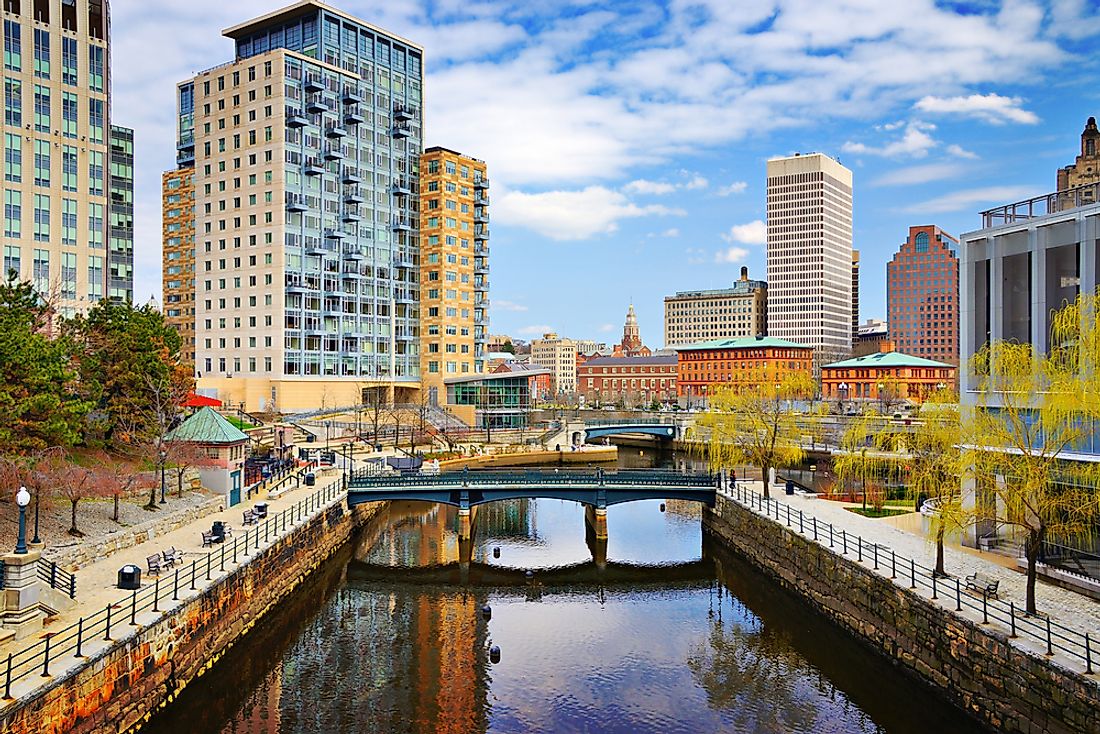Why is Rhode Island Its Own State?

Why is Rhode Island its Own State?
The State of Rhode Island is located in the northeastern region of the United States of America. Rhode Island is the smallest state by land area, covering only 1,214 square miles. It is the second most densely populated state in the country, ranking only after New Jersey. The state is ranked eighth among the least populous states in the country, and its official name is the State of Rhode Island and Providence Plantations. The state is bordered by the Atlantic Ocean, Connecticut, and Massachusetts as well as a relatively short maritime border with New York.
The History of Rhode Island
Before any European contact, Indigenous people first lived in what is present-day Rhode Island. By the 1600s, there was a sizeable population of European colonists who had arrived at modern-day America. One of them was Englishman Roger Williams, a Calvinist who was excommunicated by Puritans in the colony of Massachusetts for his evolving religious views. Facing arrest and shipment to an English prison, Williams settled atop the Narragansett Bay. The means by which he came across this land is disputed: it's theorized that it was either acquired through purchase or was given to him by a Narragansett chief by the name Canonicus. Williams called the site Providence, meaning "God's intervention in the world". Later in 1638, a group of religious dissenters conferred with Williams before settling in Rhode Island. The place they settled was known as Portsmouth but due to disagreements the southern part of the Island separated itself and was known as Newport.
Independence
Newport, Portsmouth, and Providence united in 1644 to form the Rhode Island and Providence Plantations ("plantation" is a British English word for "colony") with the aim of fighting for their independence. On May 4th, 1776, Rhode Island was the first colony to renounce allegiance to the Great Britain and declare its independence. However, Rhode Island was the last state to ratify the United States Constitution. It finally did so on May 29, 1790, following threats of having its exports taxed as if from a foreign country.
Rhode Island As An Independent State
During the first decades of Rhode Island's statehood, it was governed according to the colonial charter of 1663. Land owners were the only people granted the right to vote provided they had property worth at least $134, which meant more than half of Rhode Island's citizens were ineligible to vote (this doesn't include the amount of residents who were unable to vote on account of being female). As a result, this allowed for over-representation in rural areas whereas growing industrial areas were severely underrepresented. Additionally, the charter discouraged any landless citizens who did not have any endorsement from their landowners to file for civil suits. Rhode Island in acknowledgment to President Lincoln's appeal for military aid from other US states was the first to send its troops during the American Civil War. Throughout the entire state of Rhode Island, racial segregation in the state's public schools was abolished in 1866.
Present-Day Rhode Island
Since the great depression in the 20th century, the Democratic Party has predominantly taken over local politics in the region. At the moment, the state has a comprehensive health insurance plan together with an extensive social safety net by American standards. Providence is the capital of Rhode Island. The state is estimated to have a population of 1,056,298 according to a census of July 2015, which had increased by 0.35% since the previous census was taken in 2010. The whole of Rhode Island is divided into different municipalities which are then responsible for handling all affairs of the local government. The state comprises of 39 cities and towns with Providence being the largest metropolitan area.











